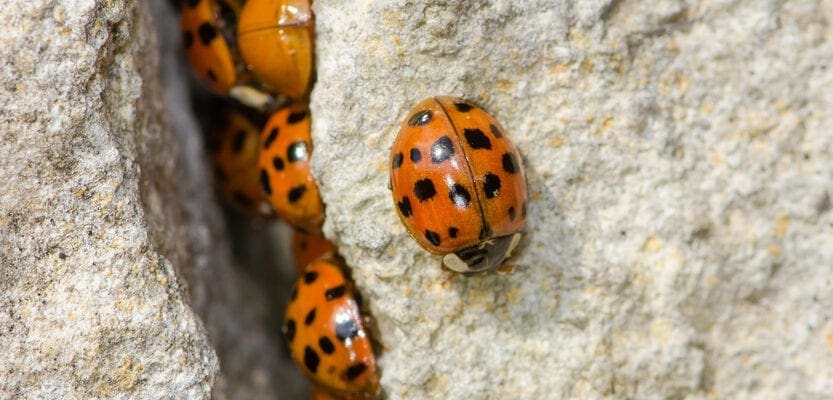Have you ‘spotted’ any of these little insects in your home? Read more in our article, exclusively for Subs Club members
Having invaded the UK, the harlequin ladybird (pictured above) is now staging a takeover of our homes, according to reports from across England and Wales. In the first week of October, social media users were reporting harlequins entering houses by the hundred.
Native to Asia, the harlequin ladybird Harmonia axyridis was deliberately introduced to North America in the 1980s in an attempt at biological control of aphids, and thereafter to parts of Europe. It reached Britain in 2004, either transported by accident or blown across the Channel by strong winds. This summer’s heatwave is thought to have boosted numbers, and now, as the weather cools, the harlequins are looking for places to hibernate.
Although useful to gardeners as a voracious aphid predator, the harlequin is a threat to British ladybird species because it can easily outcompete them for food, and supplements its diet by eating other ladybirds’ eggs. Harlequins come in more than 100 different colour patterns, but the most common forms seen in the UK are orange with 15 to 21 black spots, or black with two or four orange or red spots.
Professor Helen Roy of the Centre for Ecology and Hydrology, who organises the UK Ladybird Survey (and found 50 harlequins sheltering in her own bedroom), said reports of harlequins invading homes started in the cooler north of England, before spreading down the country. Ladybirds found indoors in autumn are likely to be harlequins, she said, as native ladybirds prefer to hibernate outdoors.
Find out more at https://www.independent.co.uk/news/uk/home-news/ladybirds-sti-uk-invasion-harlequins-ladybugs-a7389221.html





